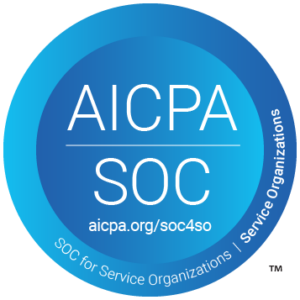“Not if, but when.”
That’s the consensus among experts in higher ed as artificially intelligent applications continue to bring ideas to life.
In the classroom AI may be a helpful assistant for students, and in an administrative office it might be a tool for task automation. In any case, the value is clear: with AI, we can be more productive than ever before.
With fewer resources and higher stakes in the wake of a pandemic, it’s no surprise that we have embraced AI in more ways than one. Perhaps more surprising is the rapid pace at which AI becomes more sophisticated.
In 2022, an engineer at Google raised concern over fear that LaMDA (Google’s family of language models for AI) might be sentient. Many experts weighed in to conclude that the AI model did nothing more than follow its programming to mimic human behavior. Yet, it’s worth noting that even an engineer who was intimately familiar with the AI model was surprised by its performance.
And now, with the recent release of ChatGPT, a generative model that produces human-like output following a prompt, you don’t need to be an engineer or work for a tech company to see this kind of technology yourself.
Reactions are mixed – some are left in awe, while others are inspired — but everyone agrees that AI is here to stay. With that in mind, shouldn’t we ask:
“Not if, but how?”
Responsible use of AI in Higher Education
The value of an AI tool is that it can replicate human interaction at scale. Where one person is limited to a finite number of tasks each day, an AI tool has virtually unlimited capacity in perpetuity. Together, human expertise and AI can unlock new potential for all sorts of functions within higher education.
Some applications of AI happen behind the scenes, such as analyzing volumes of data to surface trends, or automating parking systems to identify occupancy. Other applications put AI front-and-center.
For example, an AI chatbot can answer questions day and night, especially when personnel are unavailable or when offices are closed. This in turn improves efficiency, often by handling repetitive questions and creating time for staff to focus on other matters.
Yet, we must not lose sight of the underlying goal: to help learners succeed. Is it enough to reduce the number of tasks that staff members must complete? Perhaps not.
ChatGPT has shown us that on its own, AI is a lot like a mirror: it reflects what we show it. This makes AI vulnerable to bias, given that it learns from interacting with people who, well, may be biased.
And implicit bias is just one element to consider. Some students do not have reliable access to the internet to engage with such a resource. Meanwhile others may have no idea that the chatbot exists, while some may not use the best terminology to effectively interact with it (consider language barriers, slang, vernacular, etc).
Suffice to say, AI technology is a complement to human intervention, not a substitute.
So extending that idea, we can reverse the application and use AI chatbots to engage with students proactively, addressing issues before they arise, and answering questions that students might not have known to ask. It can even be an effective tool for listening and understanding needs at both the macro- and microeconomic scales, and creating segments for targeted support.
Does it save time? Yes, and more importantly, it’s proven to make a substantial difference in student persistence and outcomes, especially among first generation and historically resilient learners. Now we’re using AI for a collective benefit that puts students at the center.
During a webinar with University Innovation Alliance and The Chronicle of Higher Education, Tim Renick, Executive Director of Georgia State University’s National Institute for Student Success (NISS), discussed their use of AI to support students. “And then we began to engage in AI enhanced texting,” said Renick. “What if we were able to build up a tool that would help students answer key questions and navigate key obstacles to enrollment?”
Pitfalls of AI in Higher Education
Risk. It’s ever present, and it can be mitigated.
Every successful implementation of AI faces risk along the way, yet there are many ways that tools like ChatGPT can be leveraged within higher education. By considering some of the most common challenges for institutions of higher ed, you can be prepared to overcome them. So what are those common challenges, exactly?
- Lack of understanding of the technology and its capabilities
It’s not uncommon for institutional leaders to procure AI tools and hand them over to another staff member for ownership. Of course, there’s nothing wrong with that. However, if the project owner isn’t aware of all that the tool can do, it’s reasonable to expect that the tool may be underutilized. - Lack of clear goals and objectives for implementation
You should know exactly which needles you want to move with your implementation. AI software companies typically establish a client success representative tasked with helping you achieve the goals you set. If you aren’t clear about what you want to accomplish, it will be difficult to align on the best strategies and even more difficult to measure impact. Remember to ask: “how can AI be used to help students succeed?” - Inadequate training for faculty and staff
Whoever owns your implementation, it’s unlikely that they’ll go at it alone. If the project owner doesn’t understand the technology and what it can do, faculty and staff may not, either. Of course underutilization is a concern in this case, but there’s also the possibility that without knowing how to use it, staff may actually damage or weaken the tool’s ability to provide a valuable service. - Ethical concerns such as data privacy and bias
It’s no secret that as humans we are subject to biases — the important thing is to be vigilant. Failure to create processes for identifying and rectifying bias could certainly threaten to diminish the effectiveness of an AI tool. The same goes for data privacy – if you aren’t intentional about the data collected and stored by AI (and how it’s handled), you could be putting your implementation at risk. - Dependence on technology and neglect of human interaction
Once more, AI technology is a complement to human intervention, and not a substitute for it. Too often, we think of AI tools as “magic” (to be fair, it can be pretty magical), and have the tendency to “set it and forget it.” The reality is that AI requires human input to learn, improve, and make a positive impact for those it’s intended to support.
Recommendations for using AI in Higher Education
The first and most important recommendation is that you determine how the tool will help your students succeed. This should lead you to defining goals and objectives that are clear, and that put students at the center.
Next, establish a group of staff that will be responsible for addressing and mitigating ethical concerns. While you may not be able to account for the unknown, you can be prepared with contingency plans that identify issues and work to resolve them, rather than letting them go unaddressed.
Then, be sure that all faculty and staff who will oversee and use the AI solution are adequately trained. Make sure at least one owner has seen product demonstrations, and that you’re receiving product updates from your provider. That way, you can ensure that your implementation runs smoothly, and that you take advantage of all the latest and greatest features available.
Finally, encourage human interaction, and avoid reliance upon technology. This will help to continuously evaluate the effectiveness of the technology and make adjustments as needed. It can also be the difference between a “reactive” and a “proactive” solution. One way to think about this is that you shouldn’t buy AI – you should hire it and develop it the way you would a member of your team.
For many of us, ChatGPT has opened our eyes to a world of possibilities. With this understanding, we know that technology has the potential to greatly benefit students in higher education, but it is important to approach implementation with caution and consider the potential pitfalls. With proper planning and execution, AI can enhance the learning experience for students and improve learner outcomes.
Let's talk AI
Mainstay works with research partners like the Yale Center for Emotional Intelligence, the National Institute for Student Success, and The Partnership for Ed Advancement to develop messages proven to drive better student outcomes.
If we’ve piqued your interest, let’s explore how we can work together to spark a brighter future.
Not ready to connect, but want to know more? Check out our white paper, All about Behavioral Intelligence.


